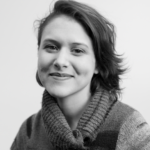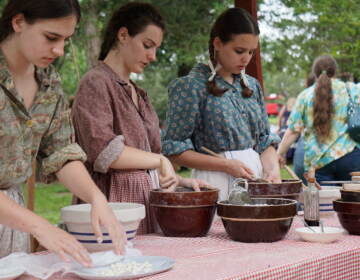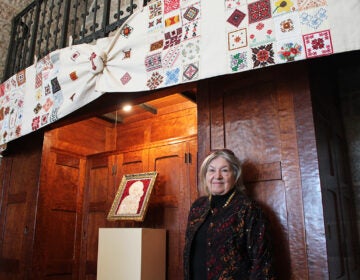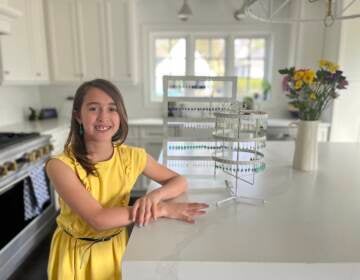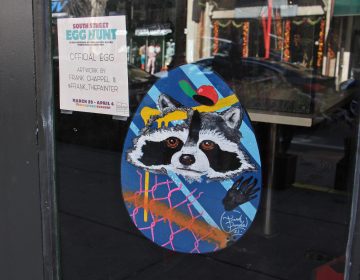How did Pa. become the ‘gateway’ to Easter egg decorating? A Glencairn Museum exhibit explains
The art form introduced by the Pennsylvania Dutch and shared by other German and Eastern European immigrants continues to be practiced by Pennsylvania artists today.
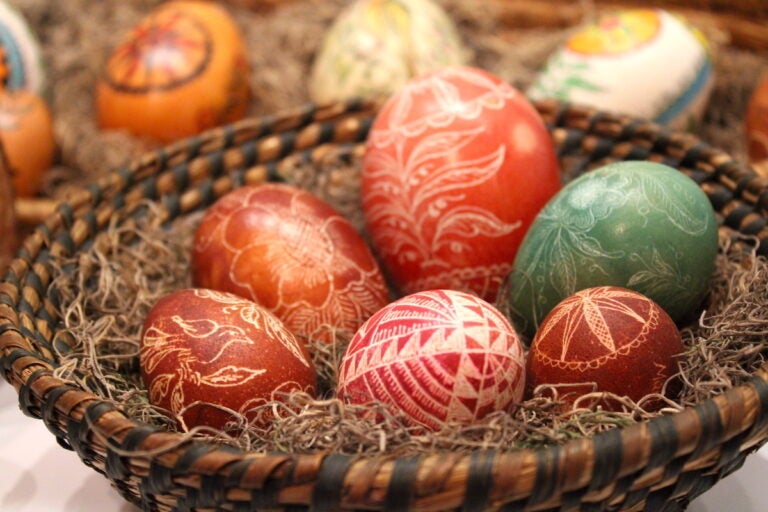
"Scratched" eggs decorated in the Pennsylvania Dutch tradition, featured in Glencairn Museum's exhibit, "Easter Eggs: Symbols of Rebirth and Renewal." (Emily Neil/WHYY)
From Delco to Chesco and Montco to Bucks, what about life in Philly’s suburbs do you want WHYY News to cover? Let us know!
Decorated eggs are a mainstay of Easter celebrations — both the real and plastic kinds.
But when immigrants first brought the colorful eggs to the U.S., they were not received kindly.
“Some people rejected it, because it wasn’t their form of Christianity,” said Leah Smith, manager of visitor experience at the Glencairn Museum.
That eventually changed. There can’t be an Easter party without decorated eggs or an “Easter egg hunt” today.
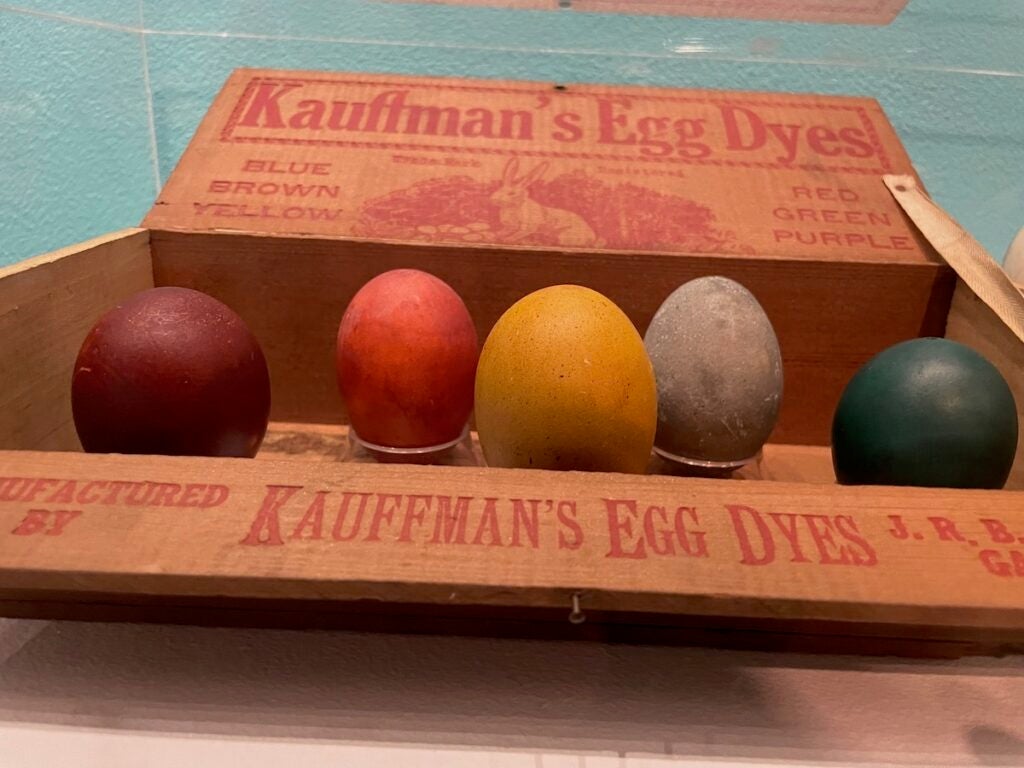
The full range of techniques and histories of Easter egg decorating among immigrants is on display now at Glencairn Museum’s “Easter Eggs: Symbols of Rebirth and Renewal.” The exhibit at the Bryn Athyn museum of religious art and history features more than 200 eggs dating from as far back as 1844 to works by present-day Pennsylvania artists.
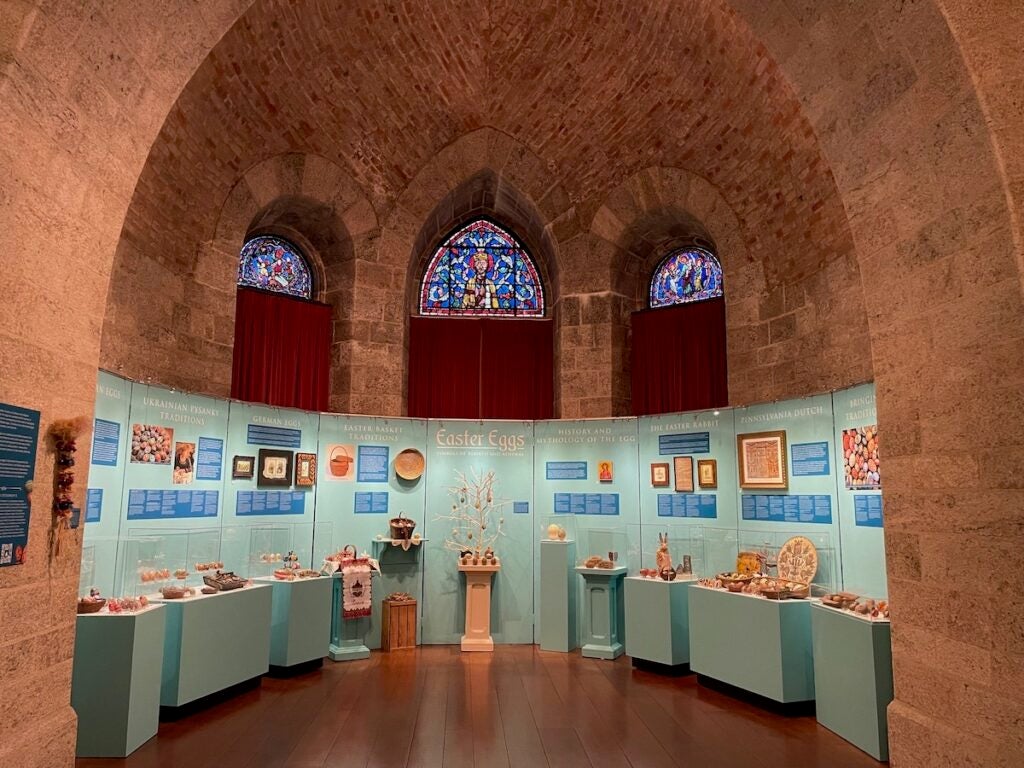
“We’re really pleased to be able to highlight these works and to give Pennsylvania some attention in terms of the commonwealth’s diversity of traditions and these really robust artistic traditions associated with the Easter season,” Patrick Donmoyer, exhibit co-curator, said.
For the Pennsylvania Dutch — German-speaking immigrants who settled in Pennsylvania in the 18th century — along with the German, Lithuanian and Ukrainian immigrants who came after them, the delicate, ornately decorated eggs they created and displayed during the Easter season were an important part of how they practiced their faith and culture in a new country.
“Over time, more and more people, almost all Christianity uses the egg around Easter in one form or another because of … something that humans know about: Eggs have to do with springtime rebirth and renewal. We know that innately,” Smith said.
Donmoyer, who is director of the Kutztown University Pennsylvania German Cultural Heritage Center, which partnered with Glencairn Museum for the exhibition, explained that each group of immigrants had their own artistic techniques for decorating eggs.
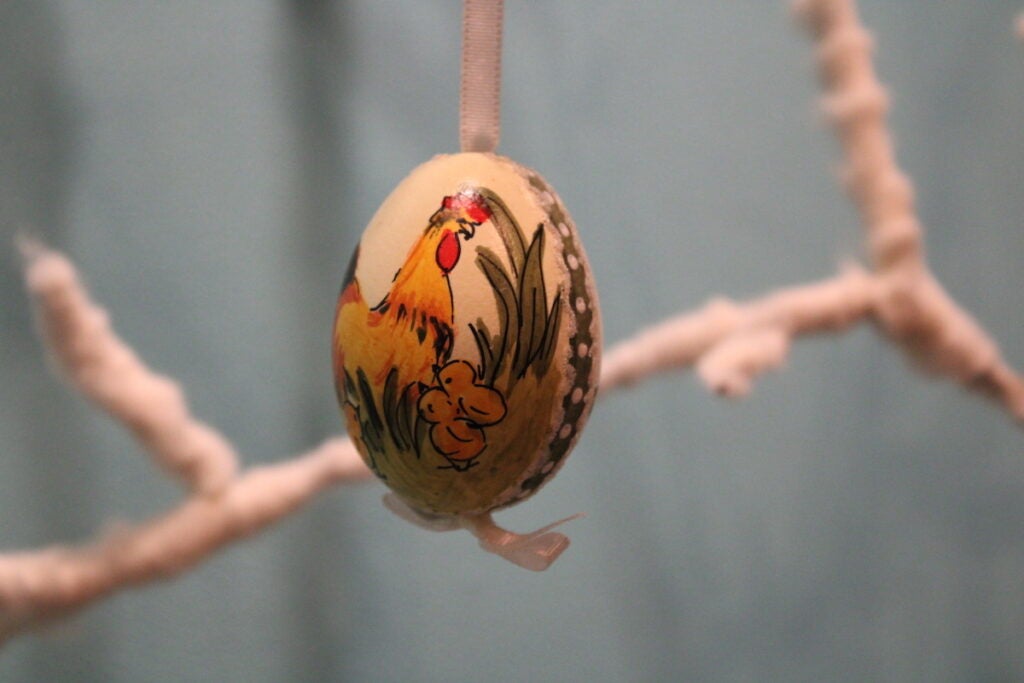
These included egg scratching, in which the egg is dyed, and a utensil is used to scratch away the dye to create a design; a drop-and-pull technique used by Lithuanian artists, in which wax is applied onto the surface of an egg and resists color when dropped into the dye; and applying the pith of the bullrush plant, which the Pennsylvania Dutch called Binsagraas, to the outside of the egg.
Ukrainian pysanky eggs are also featured in the exhibit. The intricate patterns and decorations on each egg are created using wax patterns applied to the egg after successive dyes with multiple colors. These highly decorated eggs are given as gifts, while other eggs, called krashanky, are dyed red when boiled with onion skins and taken to the Easter Vigil or Easter celebration to be blessed and eaten with the Easter meal.
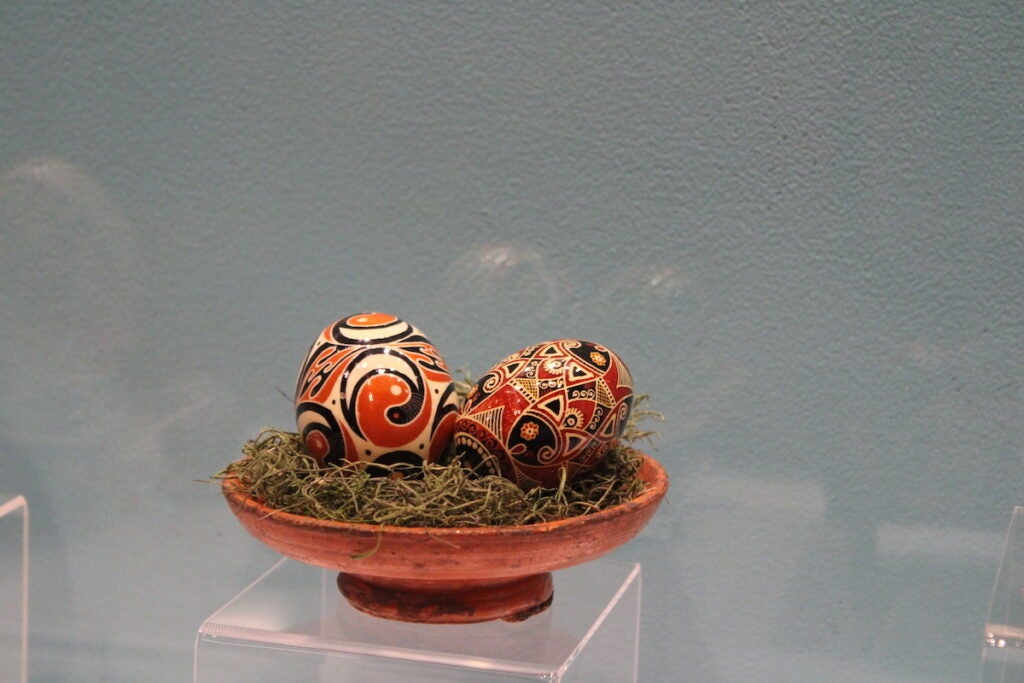
Donmoyer said Pennsylvania served as an incubator for many of the cultural traditions woven into the country’s history, and Easter eggs are “a really important way that we can see this cultural mosaic in action.”
“Pennsylvania was the most diverse of the 13 colonies. And that really made Pennsylvania a place that developed with a unique trajectory, both in the cultural and religious spheres, but then in the artistic spheres as well,” he said. “And I’m really pleased that we were able to incorporate so many unique Pennsylvania expressions in this Easter egg exhibition as a broader exploration of Pennsylvania culture.”
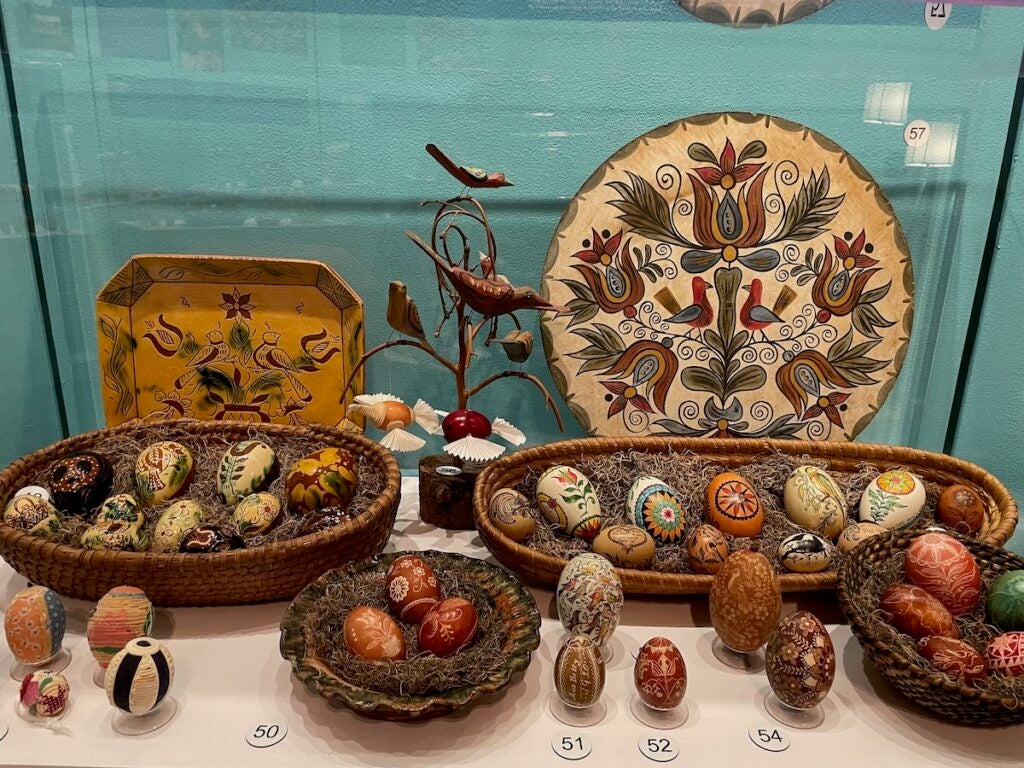
Smith, of Glencairn, said that for all four traditions displayed in the exhibit — Lithuanian, Ukrainian, German and Pennsylvania Dutch — many artists living and working in the Keystone State today continue to practice the egg decorating techniques of their ancestors.
They include artists such as Christine Luschas and her mother, Elaine Luschas, who create Lithuanian Margučiai decorated eggs, some of which are on display at the exhibit, and Elaine Vardjan, of Oley, Berks County, who creates and collects eggs decorated in the tradition of her own Pennsylvania Dutch background along with the Ukrainian pysanky tradition of her husband Matthew Vardjan’s ancestors.
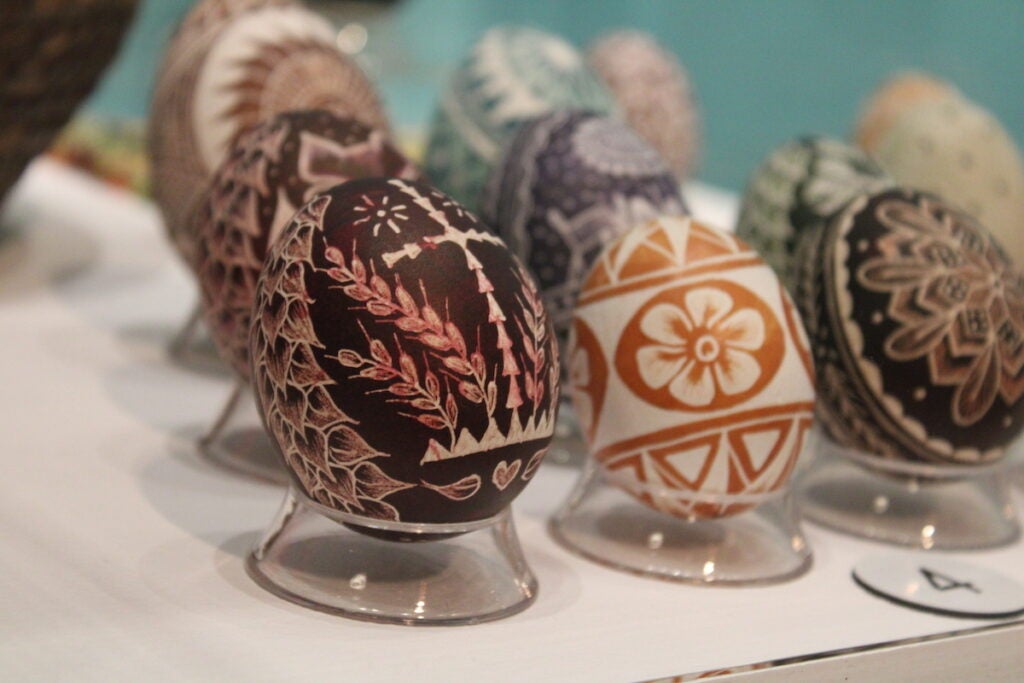
“When we had the exhibition opening, members of the [Luschas] family were here. And that’s one thing that’s wonderful. That’s also part of this tradition … Pennsylvania was the gateway to the tradition of Easter egg decorating, in the United States at least, and that it’s still alive today,” Smith said.
Donmoyer said the symbolism of the egg, and the actual practice of decorating eggs, predates Christianity by thousands of years.
The exhibit highlights some of that backstory, noting that remnants of the earliest decorated eggs were discovered at the Diepkloof Rock Shelter in South Africa. The multicolored, scratched ostrich egg shell fragments are anywhere between 60,000 and 75,000 years old and according to Donmoyer are “considered to be the earliest expressions of human graphic tradition.”
“Eggs are central to religious stories, creation stories, and many different sacred narratives and myths,” Donmoyer said. He said he sees Easter eggs as a portion of a bigger human story that everyone can relate to.
“Even if a person doesn’t necessarily celebrate Easter in their home, maybe [they’re] not necessarily religious, they may find that these types of traditions appeal to them, because they’re part of longstanding human narratives associated with the reawakening of the earth at springtime, and the way in which eggs represent renewal and new life to cultures all across the globe,” Donmoyer said.
“Easter Eggs: Symbols of Rebirth and Renewal” is on display at Glencairn Museum through May 5. The museum is open from 1 – 4:30 p.m. Saturdays and Sundays, although the museum encourages visitors to check the website for any event-related closures. Visitors can also book a private appointment, or buy a ticket for a guided tour offered Tuesday through Sunday at 2:30 p.m.

Get daily updates from WHYY News!
WHYY is your source for fact-based, in-depth journalism and information. As a nonprofit organization, we rely on financial support from readers like you. Please give today.


